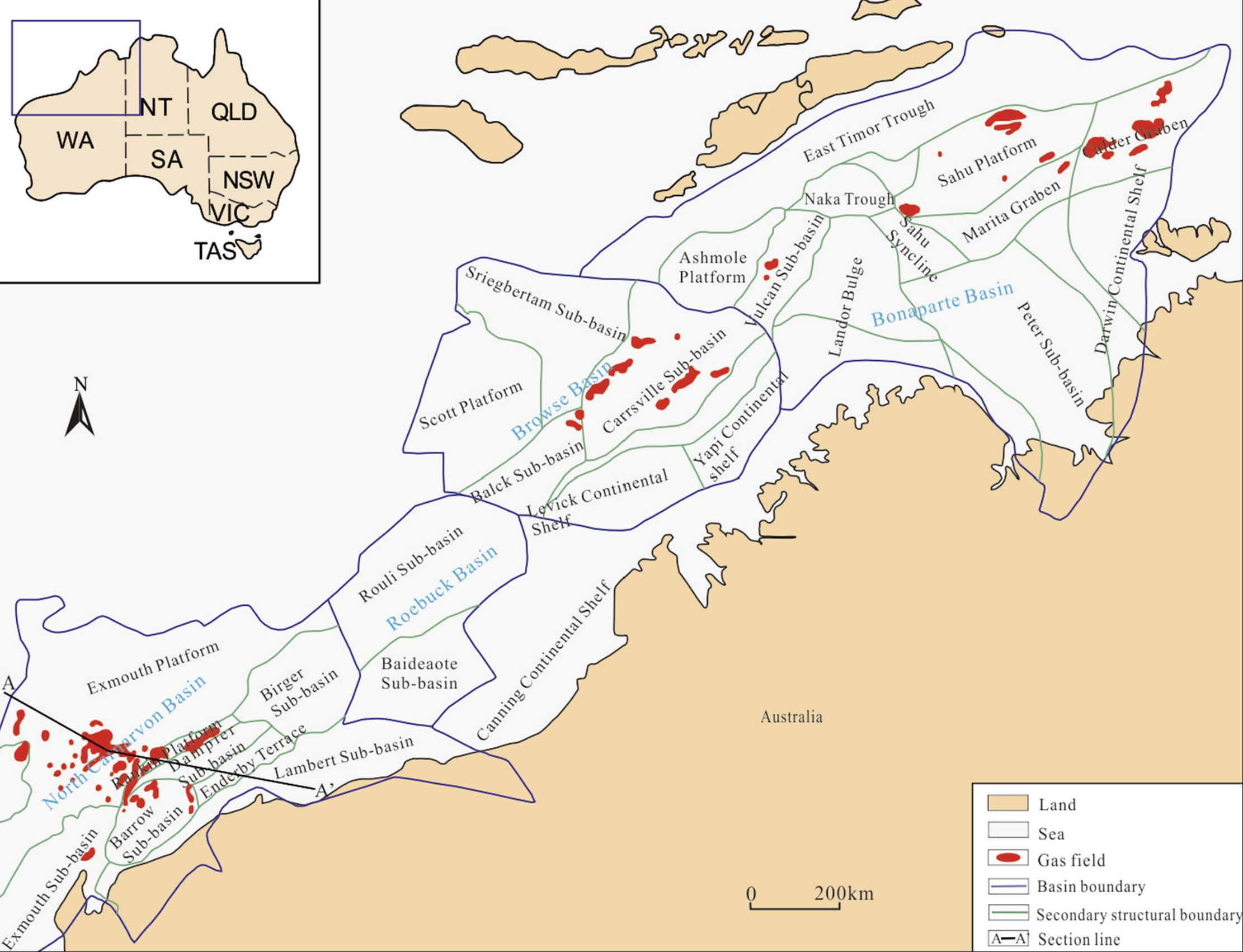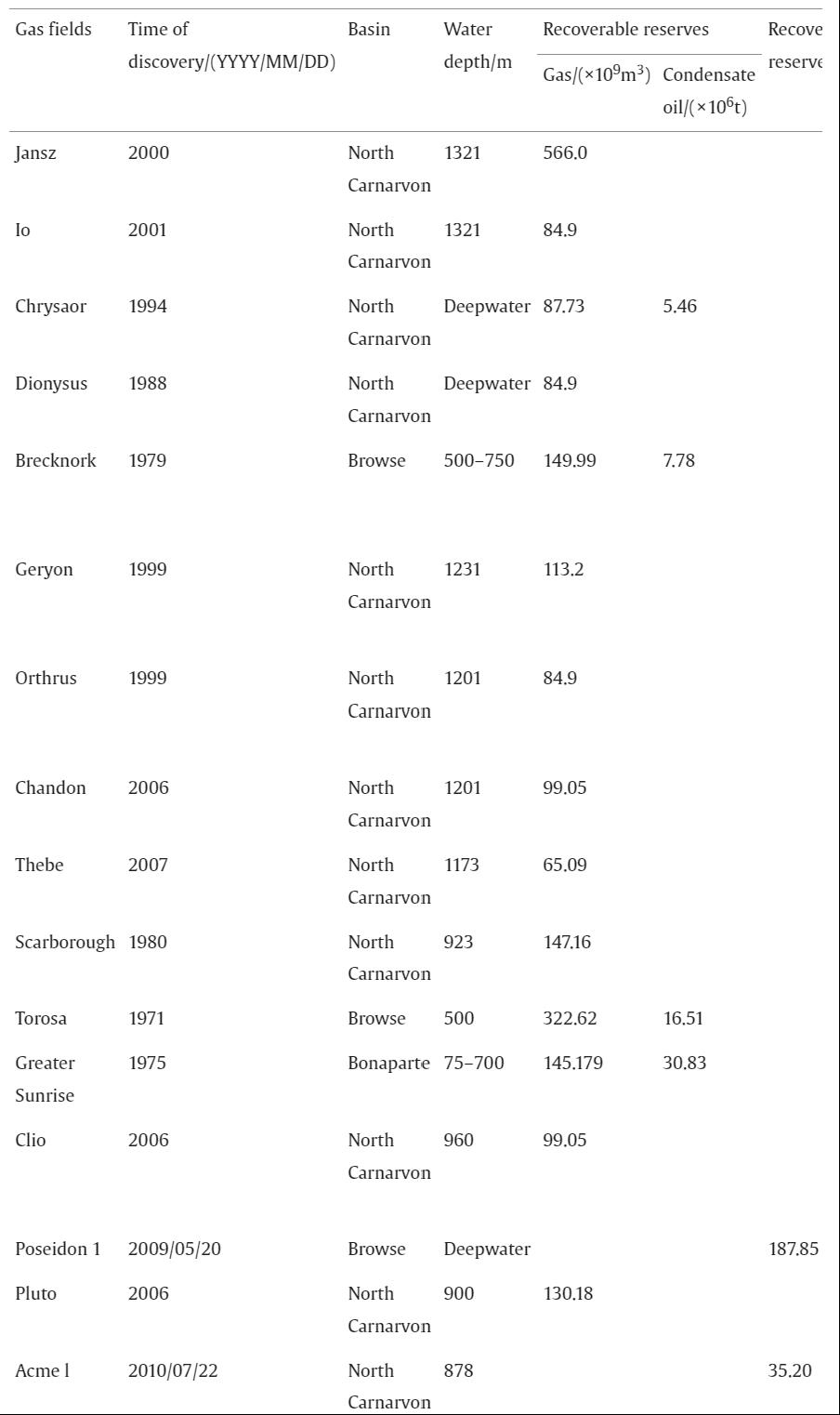
Тип бассейна:
Подтип бассейна:
Класс бассейна:
Возраст бассейна:
Тип полезных ископаемых:
Геологический возраст начало:
Геологический возраст конец:
Площадь: 392831.1 км²

Fig. 1. Distribution of basins and deepwater gas fields in the northwest shelf of Australia (according to Ref.).
Evolution history of the Northwest Shelf of Australia is closely related to disintegration of Gondwana. Generally, the area has experienced 4 tectonic evolution stages: intracraton depression (Pre-Permian), rifting (Permian–Early Cretaceous), passive continental margin (Late Cretaceous–Cenozoic), and tectonic reversal (Cenozoic). All basins have structural configuration characterized by “faults in lower sections and depressions in upper sections”. With significant thicknesses, Mesozoic formations are the key oil-bearing formations, such as those in the North Carnarvon Basin (Fig. 2).

Fig. 2. Geological section of the North Carnarvon Basin in the northwest shelf of Australia.
In the Northwest Shelf of Australia, hydrocarbon source rocks are predominantly Triassic and Jurassic marine–continental delta mudstone, carbonaceous mudstone and coal measures; reservoirs are predominantly Lower Triassic and Mid–Lower Jurassic fluvial–delta sandstones, Upper Jurassic–Lower Cretaceous delta sandstone, as well as under-water fan or turbidite sandstone; regional cap rocks include Cretaceous marine shale of passive continental margin stage. Hydrocarbons migrate vertically through faults, or laterally through surfaces of non-conformity or structural ridges to form reservoirs. Majority of traps are anticlinal traps, fault traps or structural traps of other forms. Majority of existing reservoirs have overall distribution patterns characterized by “oil in the upper part, gas in the lower part; oil in near-shore areas and gas in far-shore areas”. Deepwater oil and gas exploration in the Northwest Shelf of Australia started in 1979. With large-scale application of 3D seismic data and state-of-the-art seismic data interpretation technologies since 1992, deepwater oil and gas exploration has success rates up to 50% . Up until now, several deepwater gas fields, such as Jansz, Io, Chrysaor and Dionysus, have been discovered in the area (Table 1). Generally, the area has a relatively low degree of exploration with broad prospects in rifting formations of deepwater areas.
Table 1. Major deepwater gas fields in the northwest shelf of Australia.

Data source: Giant discoveries of oil and gas fields in global deepwaters in the past 40 years and the prospect of exploration. Gongcheng Zhang, Hongjun Qu, Guojun Chen, Chong Zhao, Fenglian Zhang, Haizhang Yang, Zhao Zhao, Ming Ma. 2019
Следующий Бассейн: Cibao